Torenia fournieri
If your shady spots are looking a little dull and uninspired, you may want to consider Torenia fourneiri, which blooms generously and brightly in areas with partial sun to full shade exposure.

We link to vendors to help you find relevant products. If you buy from one of our links, we may earn a commission.
Another mark in the “wow” column for this lovely annual comes from its velvety bicolored or tricolored trumpet-shaped flowers with their delicate throats of contrasting color.
Also known as wishbone flower, bluewings, and clown flower, this compact plant will grow in Zones 2 to 11.
Let’s learn more about this little cutie.
What You’ll Learn
What Is Torenia?
Native to tropical areas of Asia, this bushy plant reaches seven to 12 inches tall and spreads six to eight inches. But it’s not aggressive or invasive, so there’s no need to fear a takeover.
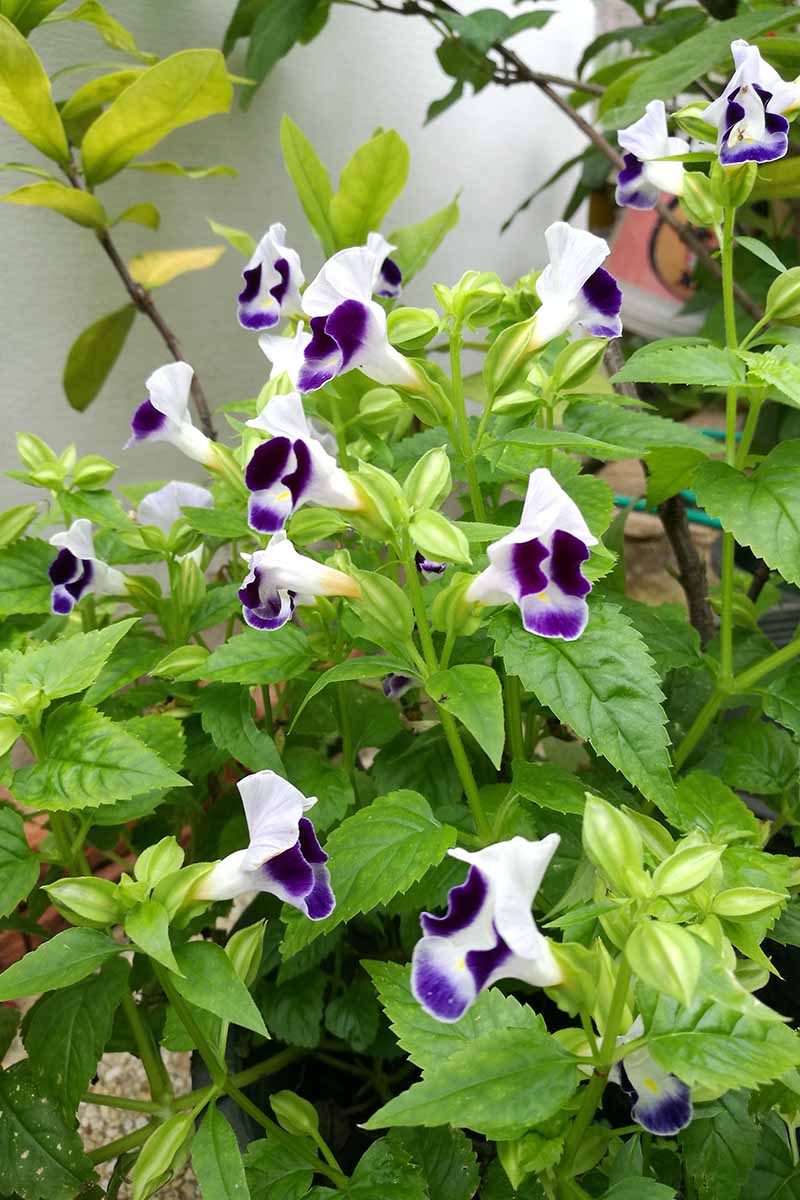
The flowers are reminiscent of their cousins, snapdragon and foxglove, which are members of the figwort (Scrophulariaceae) family.
Torenia is now considered a member of the Linderniaceae family, but was once considered a figwort family member, and you may still see the plants or seeds with the Scrophulariaceae family label.
Hummingbirds will enjoy the one- by one-and-a-half-inch flowers almost as much as you do, savoring their sweet nectar during the plant’s early summer to mid-fall bloom period.
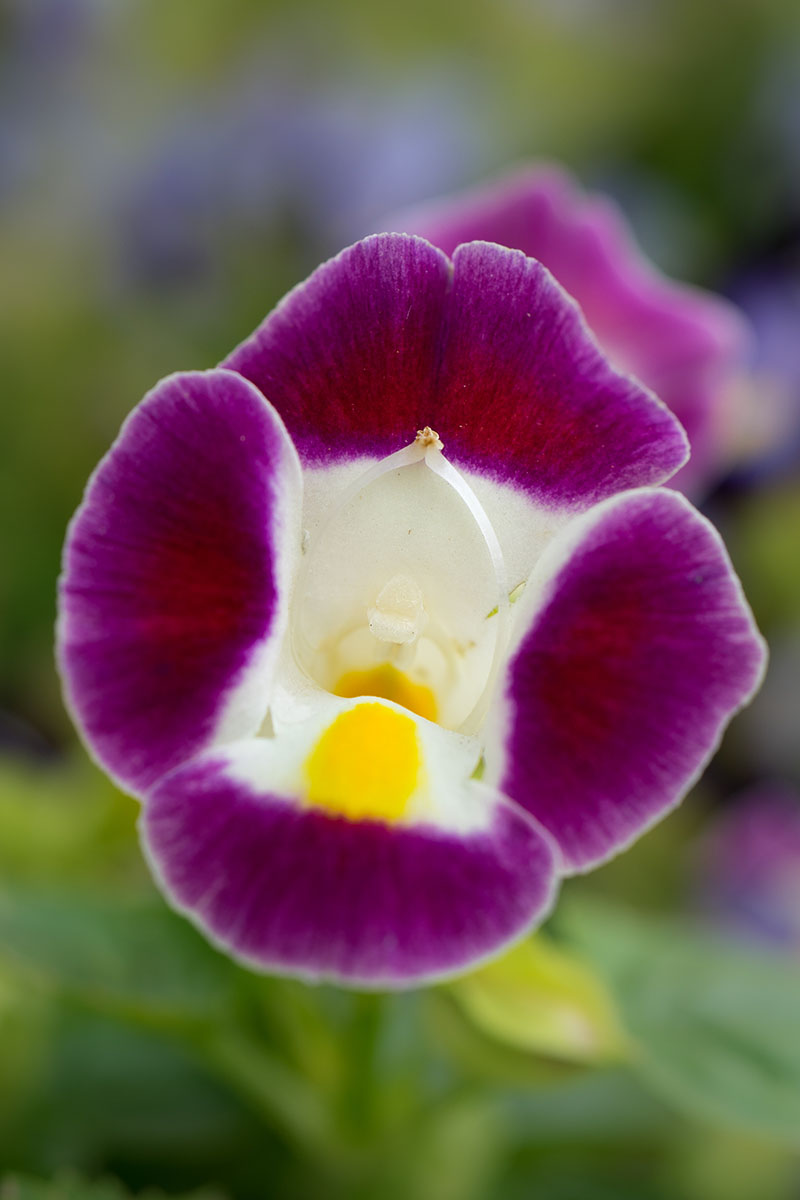
Its “wishbone flower” nickname comes from the two stamens that grow from opposite sides of the flower, meeting in the middle and forming a structure that resembles a chicken wishbone.
Its “clown flower” nickname comes from its colorful “face.” “Bluewing” is derived from its often blue, wing-shaped petals.
Good companion plantings for torenia include impatiens and ferns.
Torenia Propagation
You may be able to find Torenia starts at a local nursery, and that’s the most foolproof way to propagate them.
If you do buy them already growing with the intent to plant them in your garden, opt for specimens that are sturdy, well-branched, and not yet blooming.
When you come across a hanging basket or decorative container with plants that are already flowering, though, that’s fine.
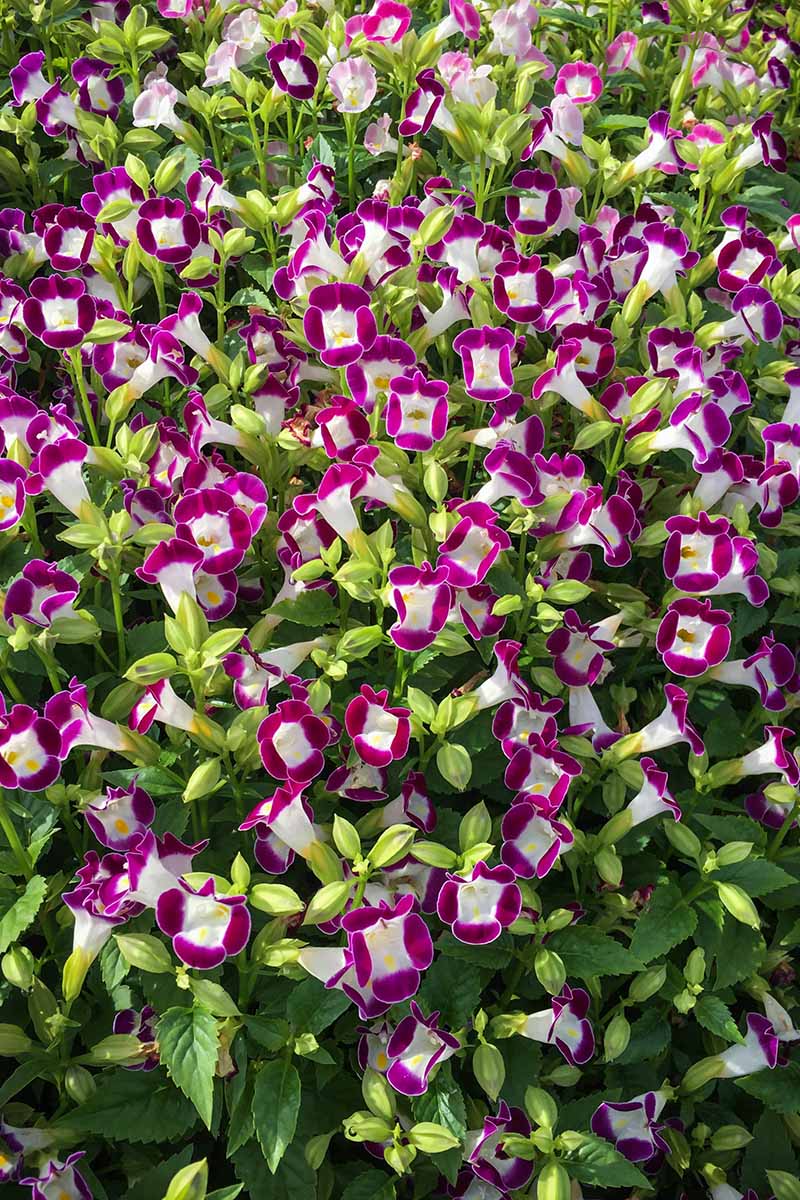
You just don’t want to be in a position of transplanting already blooming wishbone flowers since they may fail if they’re too mature.
You can also do well starting these happy face annuals from seeds, sowing them a half to one inch deep in a shallow tray of seed starting mix or in individual cells.
Start the seeds indoors six to eight weeks before the expected last frost date. Their shallow root systems don’t like to be disturbed, so your best bet is to sow in biodegradable pots you can slip right into the garden at transplant time.
Keep the soil evenly moist until germination and when the seedlings emerge, place them in bright indirect light or under grow lights.
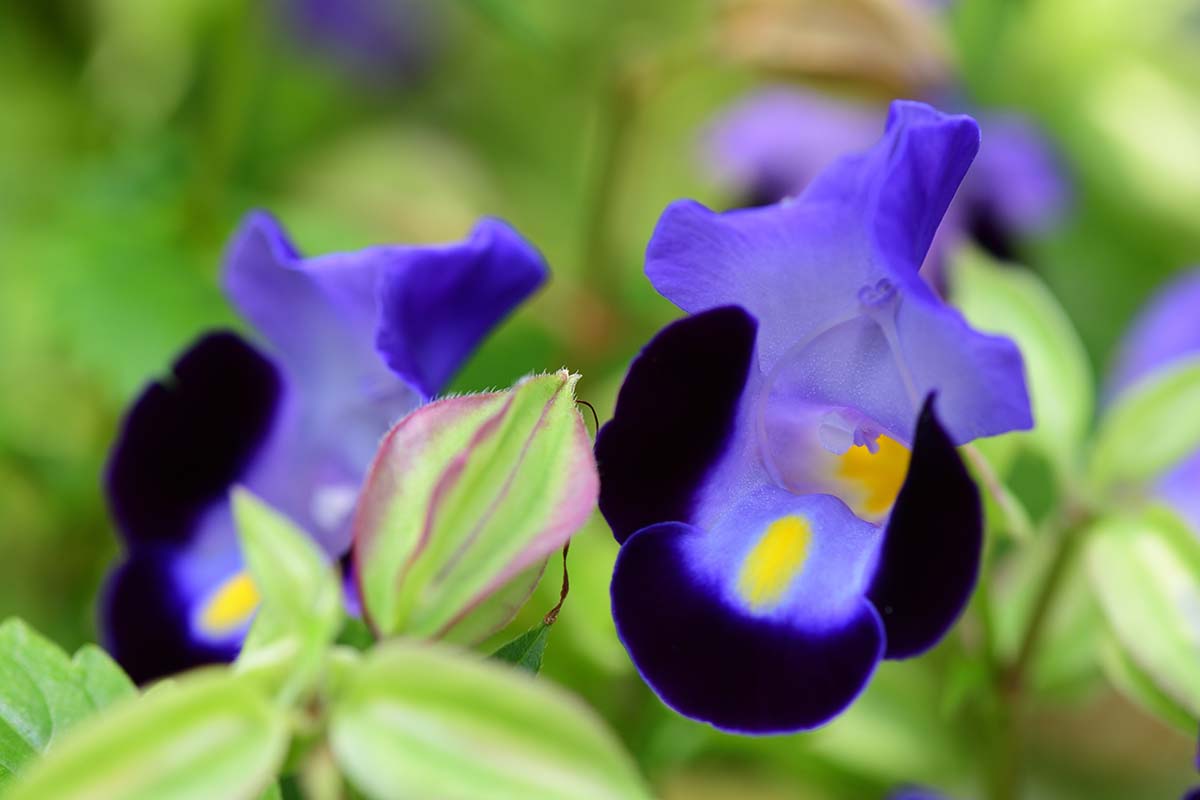
When they have three or four sets of true leaves and all risk of frost has passed, harden off seedlings over the course of a week to prepare them for transplanting.
Plant them in holes the same size as the cell they’re growing in, with the main stem even with the soil surface. If you are planting biodegradable cells or peat pots, ensure the garden soil covers the edges of the cell.
Space them about eight to 10 inches apart to allow for adequate airflow.
You can also sow seed half to one inch deep directly in the garden just before the last frost date. Expect germination in 10 to 15 days.
Once they’ve sprouted, they’ll need a bit of TLC until they’re established and then a few minutes of routine maintenance in the following months.
Read on for more growing tips.
How to Grow Wishbone Flowers
Low-growing torenia makes a lovely border or bedding plant that is glorious in containers, too. Some gardeners also grow it in a container as a houseplant.
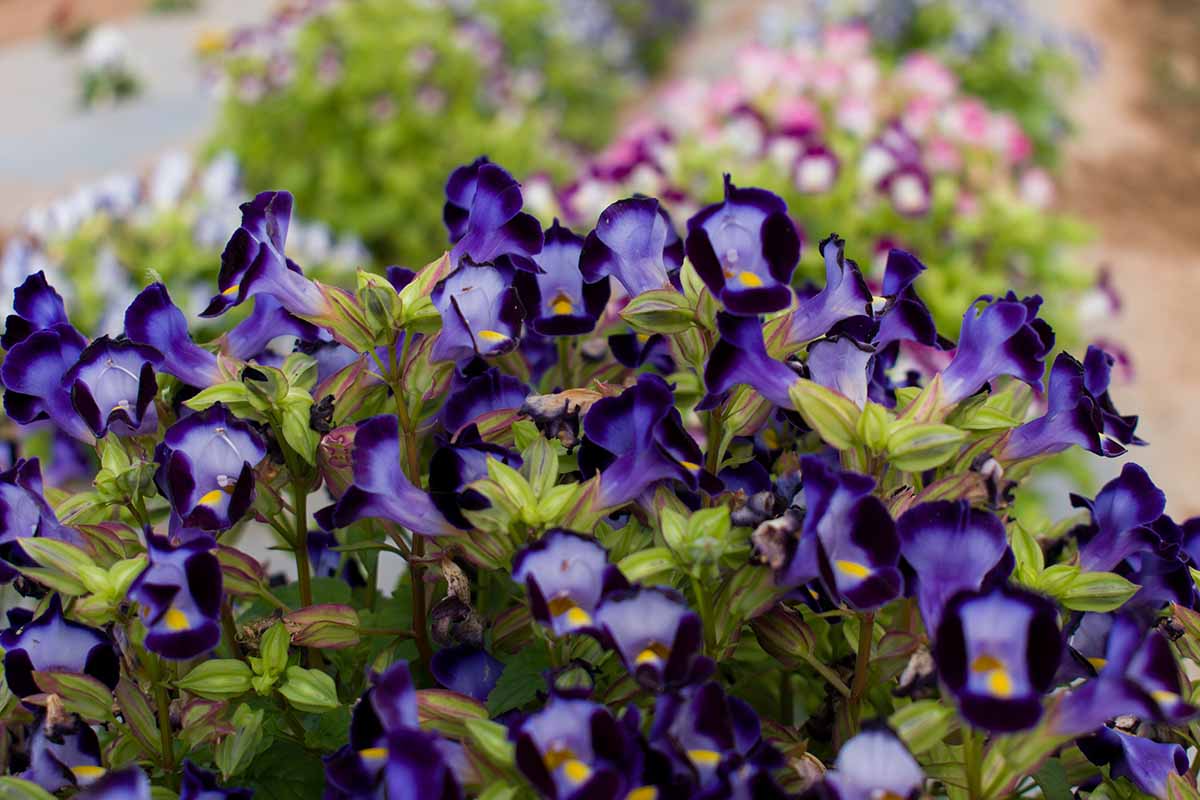
One key is ensuring the exposure in your chosen spot is suitable. Wishbone flowers will grow in areas with a few hours of the morning sun with afternoon shade, and they’ll also thrive in entirely shady places, as long as the soil is suitable.
Too much sun will kill them, though.
In the landscape, grow torenia in well-draining, moist, organically-rich soil in an area that is partly shady.
It’s a good idea to amend the area with aged compost at least a few months ahead of time if your schedule allows.
If possible, plant torenia in slightly acidic soil, with a pH from 6.0 to 6.5. That’s its preference, but it will grow okay in any pH in the 6.0 to 8.0 range.
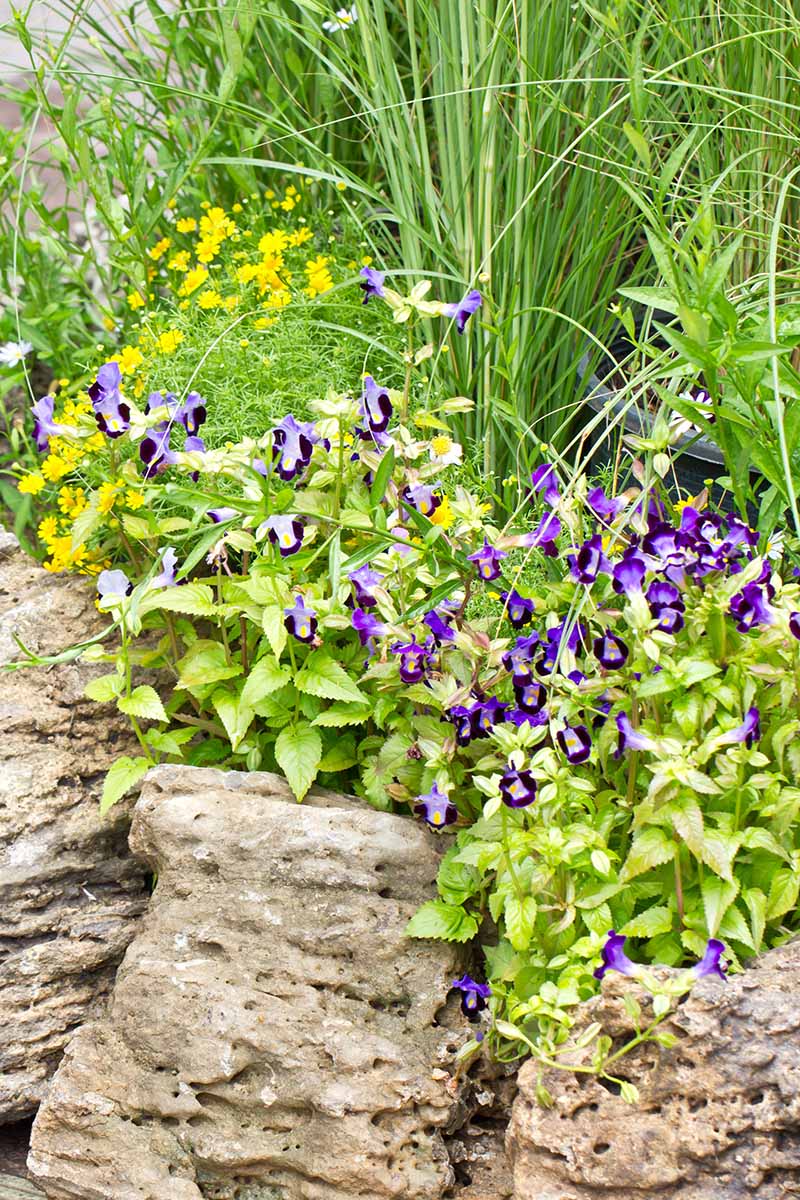
If you opt for a container, you’ll want to start with a fertile, moisture-retentive mix. For tips on selecting the proper container, see our guide.
You’ll want to apply a one-inch layer of mulch after seedlings emerge or after transplanting.
Water your plants regularly, especially in hot weather. Do let the soil dry out at least an inch below the surface before adding water, though.
This plant likes even moisture but not soggy soil or wet feet.
Fertilize wishbone plants once or twice a month during the growing season with plant food high in phosphorus, and be sure to water the plants thoroughly before and after fertilizing to avoid root burn.
Growing Tips
- Choose a part shade location.
- Sow in well-draining, fertile soil that’s been amended with aged compost.
- Fertilize at least once a month with high-phosphorous plant food formulated for ornamentals.
Pruning and Maintenance
This is a self-regulating plant that doesn’t need your help to stay at a compact, attractive seven to 12 inches tall.

If you like, when the young plants are about three inches tall, you can pinch back the growing tips to encourage branched growth and an attractive bushy shape.
It’s not necessary to deadhead the flowers. In fact, some gardeners find the seed heads quite attractive.
At the end of the growing season, remove the faded plants and place them on your compost pile.
Where to Buy
Torenia are widely available in numerous shades of yellow, pink, purple, and white, each more beautiful than the last.
You may be able to find seeds and/or starts at your local garden center or nursery.

For a deep blue variety, with light purple and yellow throats, you can find 50-seed packets available from Outsidepride via Amazon.
They’ll grow into a compact, upright bush that’s six to nine inches wide.

Or, brighten a dark spot with ‘Lemon Drop,’ which features creamy petals with yellow throats, available in 50- and 100-seed packets from Outsidepride via Amazon.
This variety makes a particularly attractive container planting.
Prefer a mix of colors?
Find a gorgeous Kauai mix featuring pink, yellow, and wine-colored flowers available in 25-, 100-, and 500-seed packets from True Leaf Market.
Managing Pests and Disease
Thankfully, these plants have no serious insect or disease problems.
You will want to watch for aphids and whiteflies, which are both sap-sucking insects that can blemish the foliage. Left unchecked, they can also cause the leaves to fall off and the plant to look scraggly.
Look for more specifics on preventing or combatting aphids or whiteflies in our guides.
While they grow well in humid conditions and prefer evenly moist soil, too much humidity or overwatering (from rain or the gardener) can encourage root rot and powdery mildew.
You may treat the latter with a fungicide, such as this one from Garden Safe, available via Amazon.

The best defense is prevention, though.
So make sure to space your wishbone plants eight to 10 inches apart for ample air circulation, plant them in well-draining soil, and only water when the soil is dry at least an inch below its surface.
Best Uses for Torenia Flowers
This is a showy bloomer with beautiful colors that flower in the early summer through fall, providing color as many other annuals are fading.
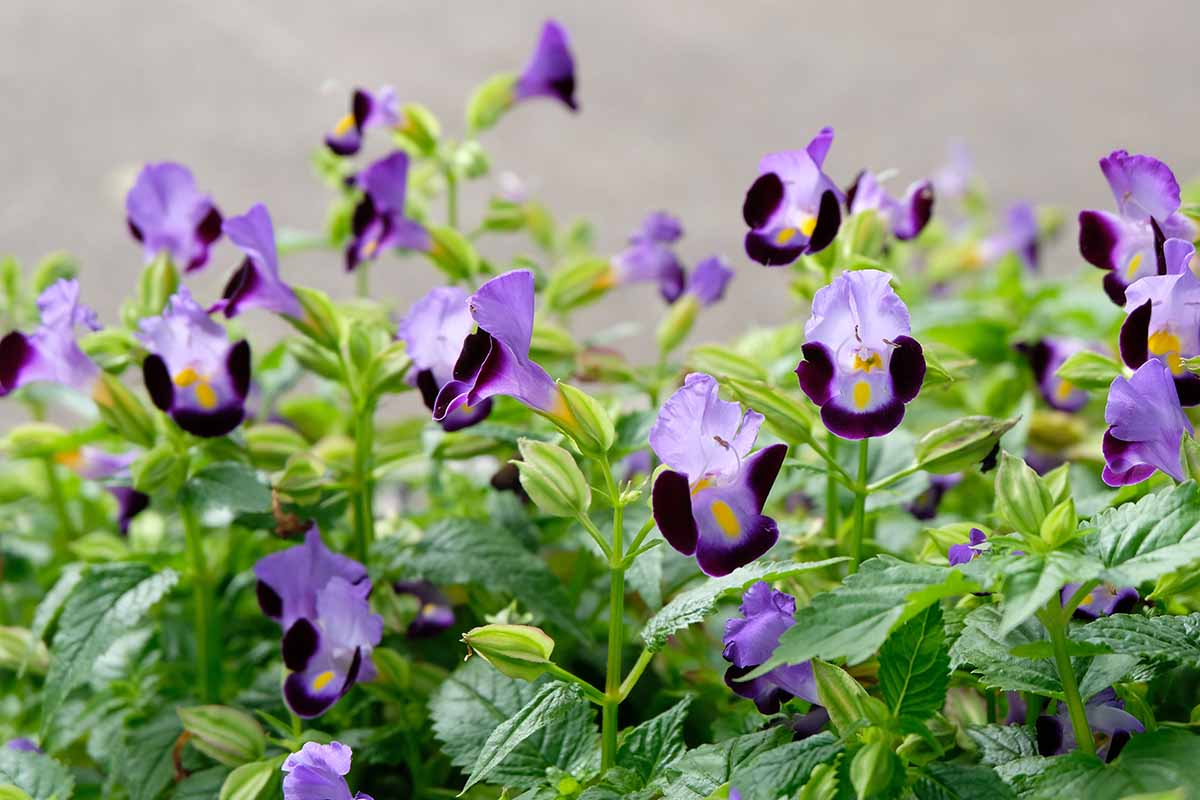
Those traits combined with its ability to flower in part sun and shady spots make it a valuable addition to many areas of the garden and landscape, from the front of borders and beds to woodland gardens and the edges of shaded walkways.
Wishbone flowers are also beautiful and easy to care for in containers, whether you combine several varieties for a riot of colors or grow a single variety in an intense shade, like one of the deep purple and blue hues available.
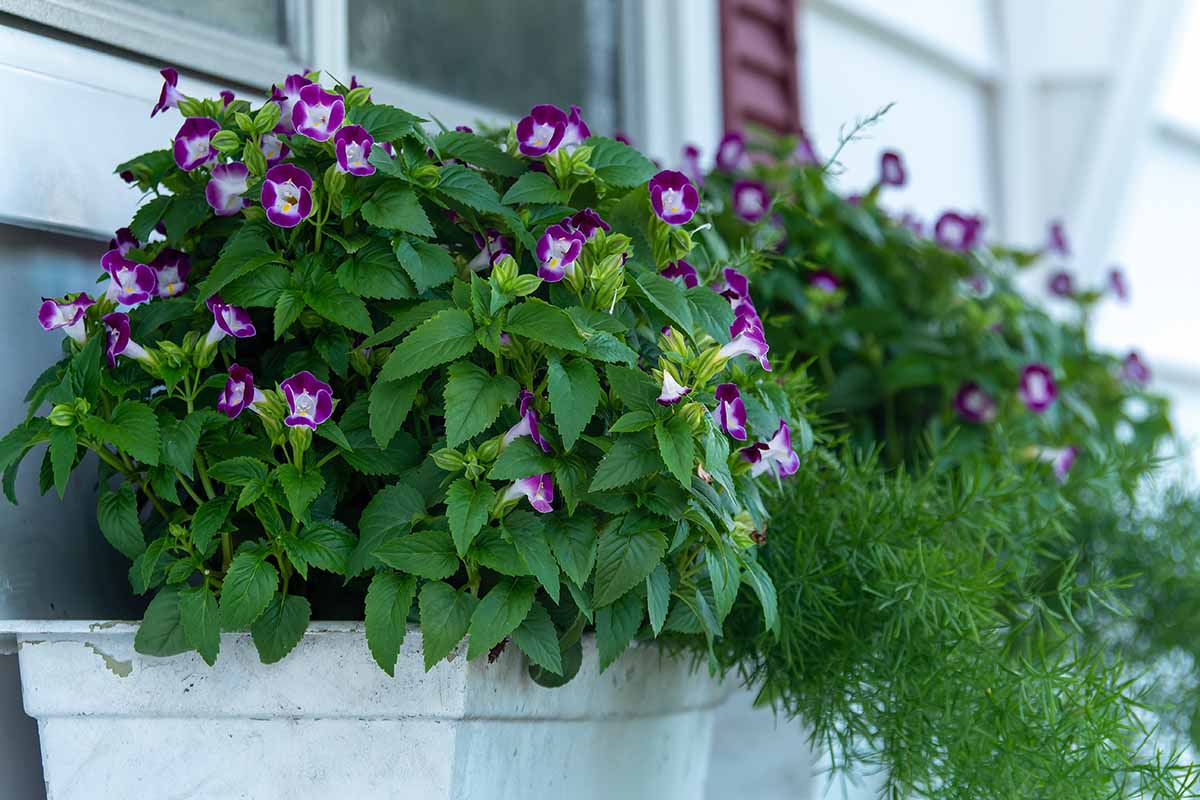
And if you do grow it in a pot, it’s possible to bring it inside in mid-fall to keep blooming for a few more weeks.
That burst of color will boost your mood, for sure. When it’s done, you’ll have just a few weeks left before it’s time to start more seeds indoors for spring transplant, initiating a new season of happy-face flowers.
Quick Reference Growing Guide
| Plant Type: | Flowering annual | Flower/Foliage Color: | Bicolor shades of blue, burgundy, magenta, pink, purple, white, yellow /green |
| Native to: | Tropical Asia | Water Needs: | Moderate |
| Hardiness (USDA Zones): | 2-11 | Maintenance: | Low |
| Bloom Time: | Summer-fall | Tolerance: | Heat, humidity, slightly alkaline soil |
| Exposure: | Part sun to full shade | Soil Type: | Organically rich |
| Time to Maturity: | 84-98 days | Soil pH: | 6.0-6.5 |
| Spacing: | 8-10 inches | Soil Drainage: | Well-draining |
| Planting Depth: | 1/2-1 inch (seeds), even with soil surface (transplants) | Attracts: | Bees, butterflies, hummingbirds |
| Height: | 7-12 inches | Uses: | Containers, edging for beds or walkways, shade gardens, winter blooms indoors, woodland areas |
| Spread: | 6-8 inches | Family: | Linderniaceae |
| Growth Rate: | Moderate | Genus: | Torenia |
| Common Pests and Disease: | Aphids, whiteflies; Botrytis, powdery mildew, root rot | Species: | Fournieri |
Happier than a Clown
You’re sure to be cheered each time you see these clown-faced flowers smiling at you from shady spots of your garden.
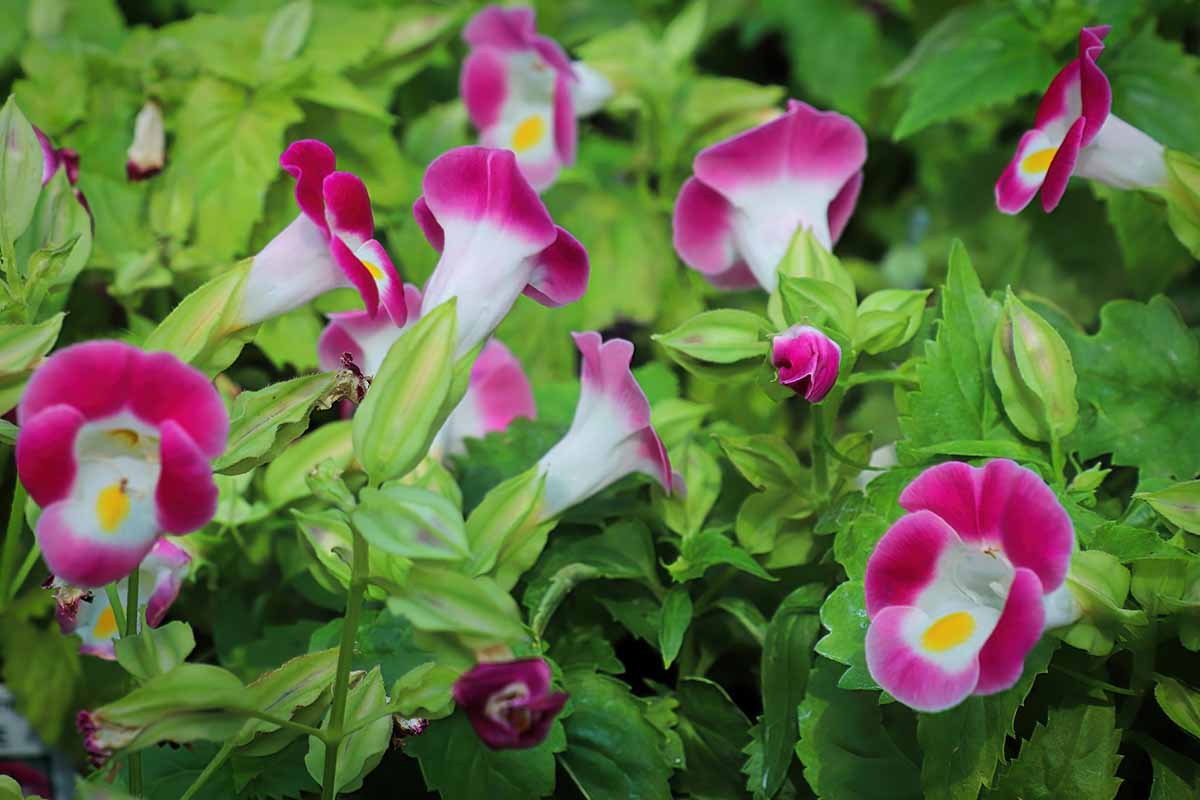
Why not add compact and colorful torenia to your landscape? Or perhaps you’re an old hand at growing this imported beauty? Share your experiences in the comments section below.
And for more information about growing flowers in your garden, check out these guides next:


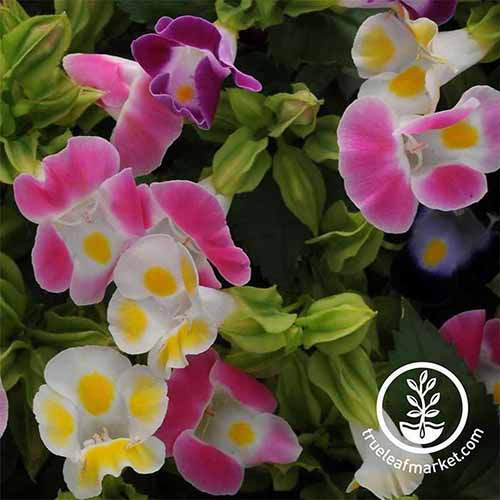
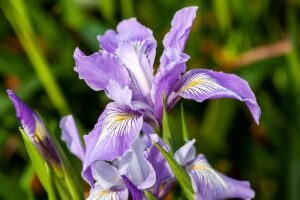
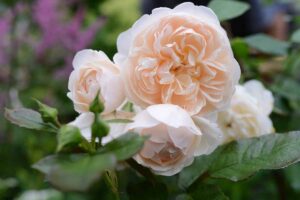
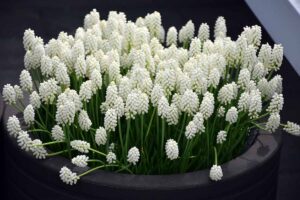
Are these Torenia plants annual or perennials?
Thanks for your question, Anne Marie! It’s usually grown as an annual since most regions get too cold for it to survive the winter months- but it can be grown as a perennial in zones 10 and 11, where the winters are very mild.
My torenia are in “dappled” shade. They were beautiful when I first planted them from the nursery, but they have not bloomed since. I planted them in a mix of regular potting soil and Miracle Grow potting soil. They look healthy, but no blooms. What can I try?
Hi Trisha,
Thanks for reading this article!
Frustrating, isn’t it, when plants won’t bloom?! I’m thinking maybe it’s the potting soil you used… sometimes those potting soils have a lot of nitrogen in them, which makes for great foliage but not so many flowers. Consider diluting the potting soil by mixing in some good compost.
Also, be sure you deadhead any spent flowers that you may have; that will help inspire the plant to produce more.
I purchased from a reputable nursery a beautiful heavily flowered torenia. I clipped it back after flowers gradually dropped off, but despite fertilizer and shade/sun I see no blossoms forming. Now I have a green well shaped but flower less plant. I expected it to flower back like impatiens fi
Deadhead yes or no? Your response states to deadgead torenia, but the article says NOT to deadhead.
??? Clarify? I want my torenia to flower again.
Thank you, Dlynne, for requesting the clarification. Torenia will bloom profusely whether you deadhead or not, but you can encourage even MORE blooms by deadheading. 🙂 Why yours is not blooming, I’m not sure. What kind of fertilizer did you use? Too much nitrogen can cause lots of green growth but reduce flowering. Too little phosphorous can be a cause of lack of flowering.
I think your best bet, if you want them to definitely continue blooming, is to deadhead.
I plant Torenia every year as annuals along a shady strip by my pool. I missed this Spring because of some work I was having done to my pool, so was just going to let that border lie fallow until next year. Around mid-August, I noticed some familiar looking leaves, and now in Sept. I have some blooming Torenia. I was surprised as I assumed they died off. Tough little plants.
Everything I have read says Torenia is an annual but have come back for 3 years now. Are they reseeding?
Hi Sheryl, they are usually grown as annuals, but in Zones 10 and 11 where the winters are mild, they can be grown as perennials.
Just to clarify Clare’s totally accurate response (because I was very confused when I started gardening and I see many others with the same issue): many plants that are called annuals are not true annuals. They are what are called “tender perennials”: as Clare notes, they do fine in tropical and/or frost free areas, and will behave as perennials, coming back year after year. But in areas that have frost, they’ll die after one season. Impatiens and lobelia erinus are other examples of tender perennials. TRUE annuals–where the plant only grows for one season–include plants like sweet alyssum, four o’… Read more »
I planted some foxglove seeds many months ago, which I purchased in a packet. Alas no foxgloves sprouted but a beautiful torenia instead. So pretty, the leaves similar to impatiens. It’s flowering beautifully.
Thanks for sharing this lovely tale of making the best of a mix-up Sharon!
I had a container plant a couple of years ago. This summer I’ve had many of these flowers pop up in my flower garden on their own. Many shades of violet and purple, and even one pink one.
They sound wonderful, Rita. I’m glad you noticed and didn’t weed them out.
The Wishbone flower is a favorite of mine since it returns every year. In Mississippi, it dies down completely every year and grows again apparently from seeds that have dropped on the soil. I find them in pots all over my patio. They even show up in a crack I have that runs across my patio.